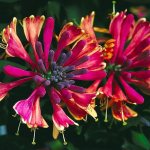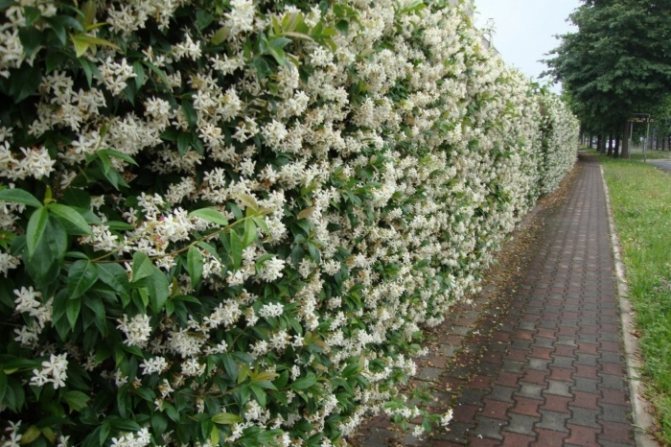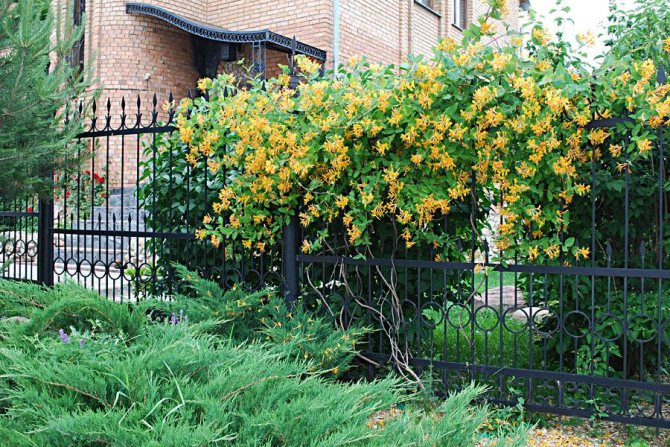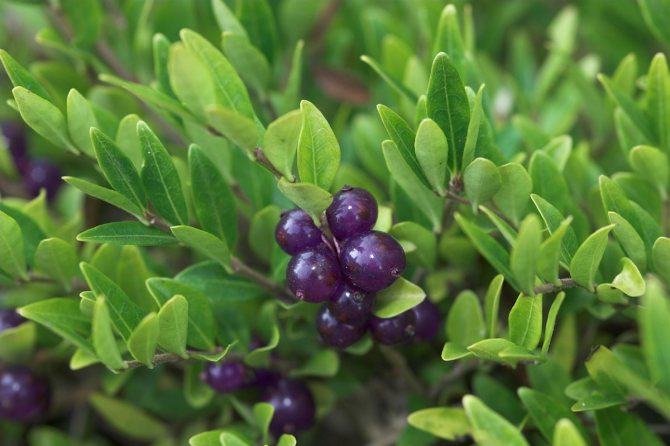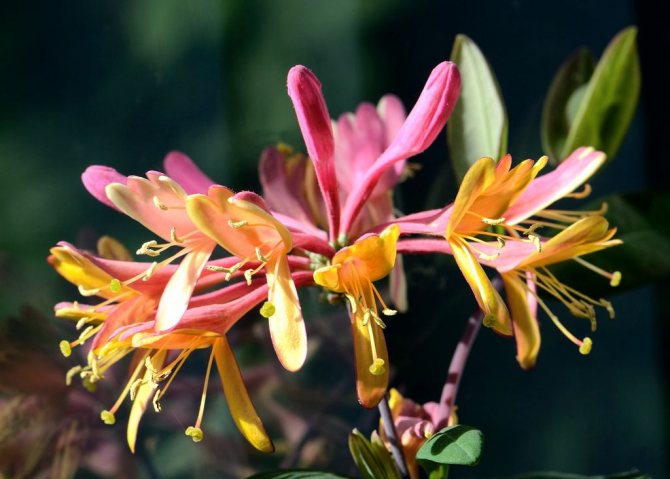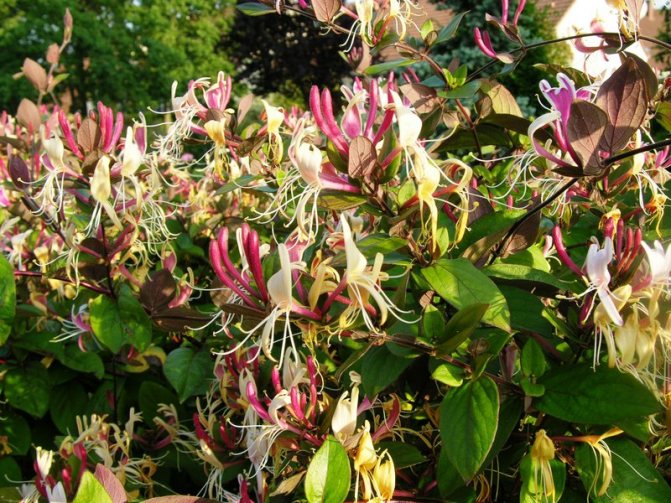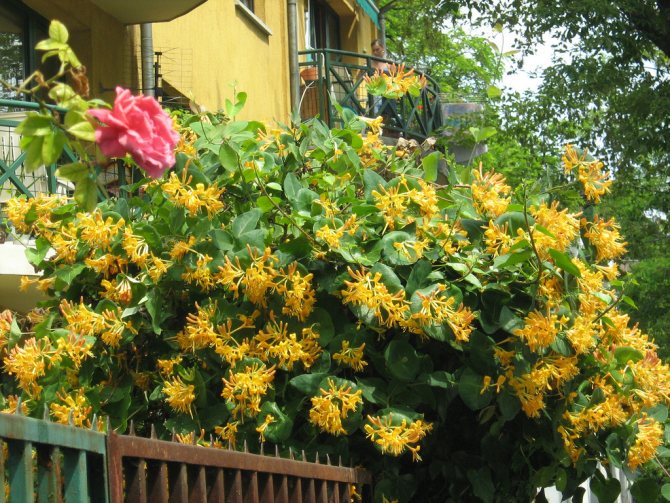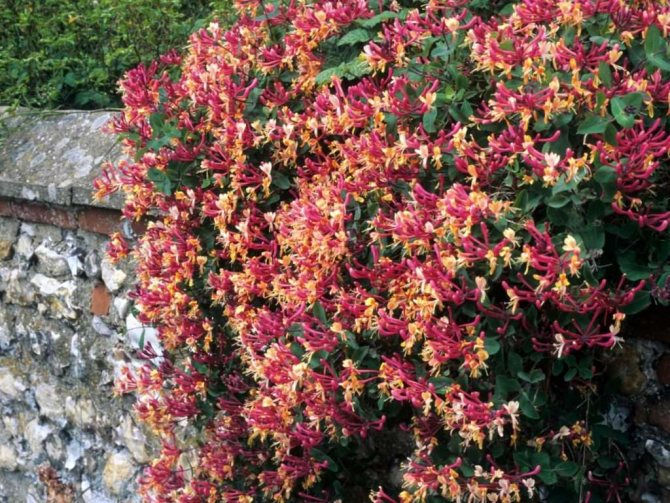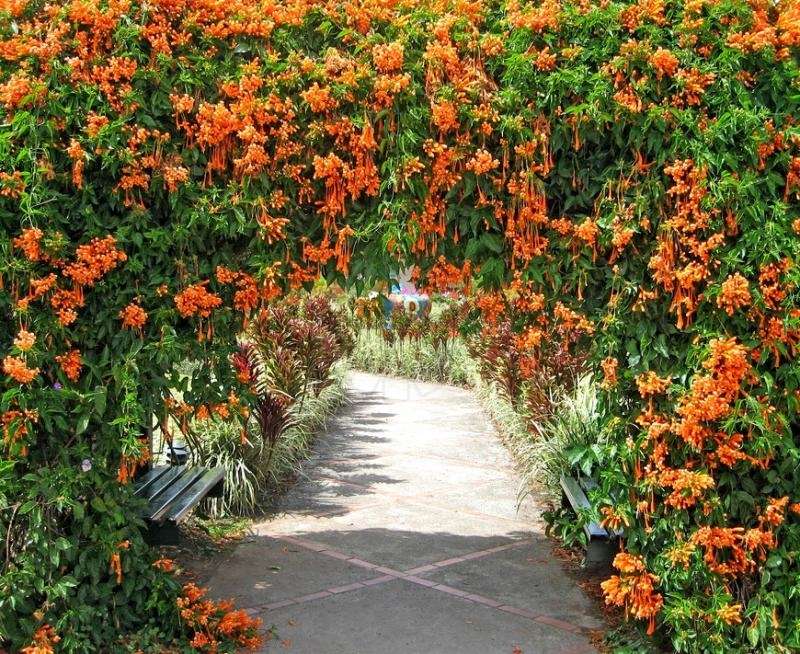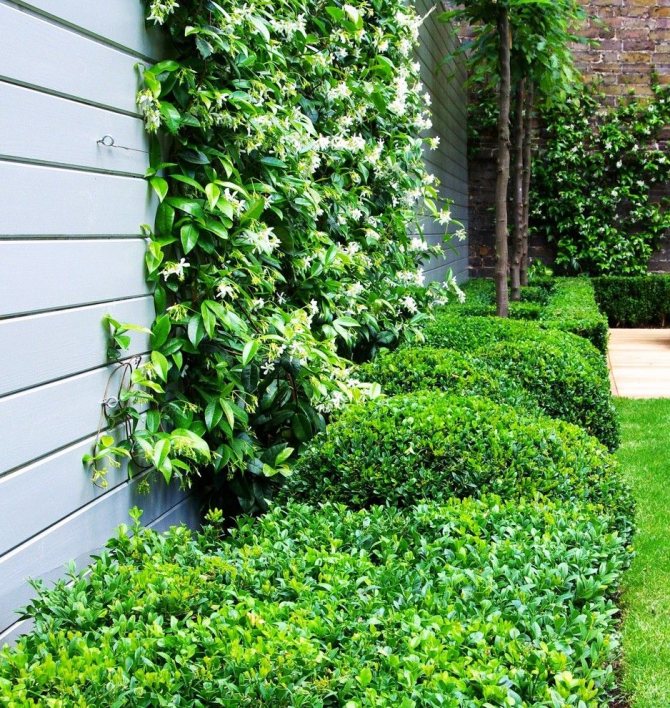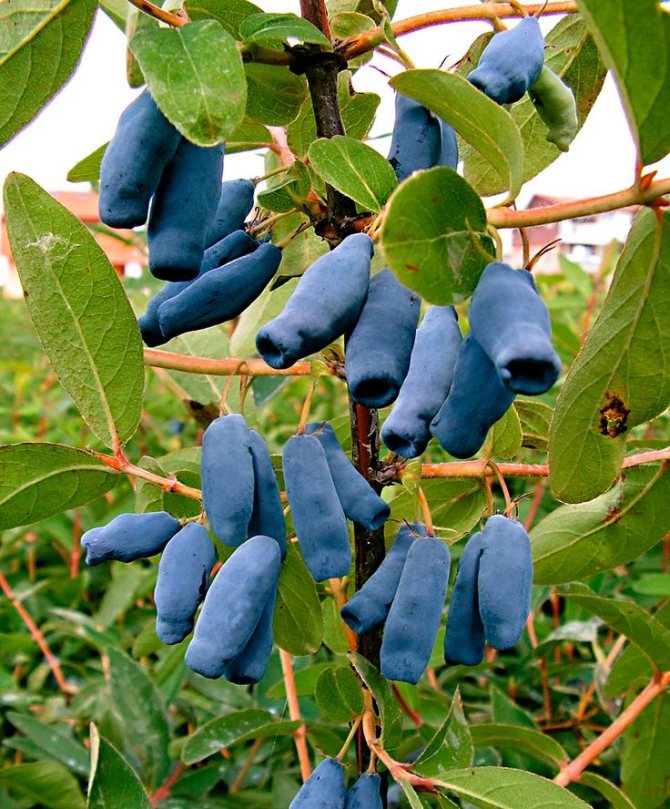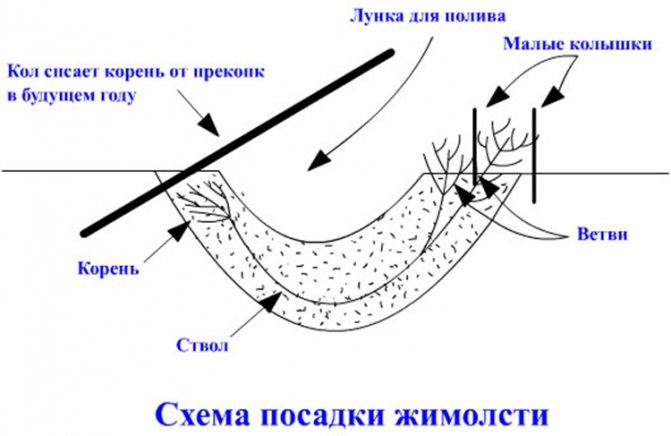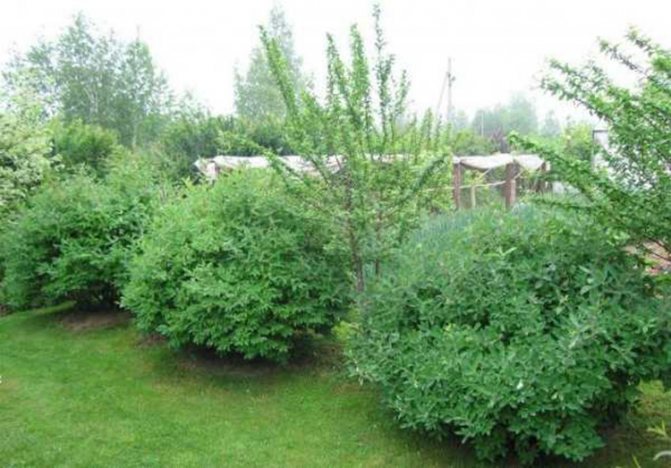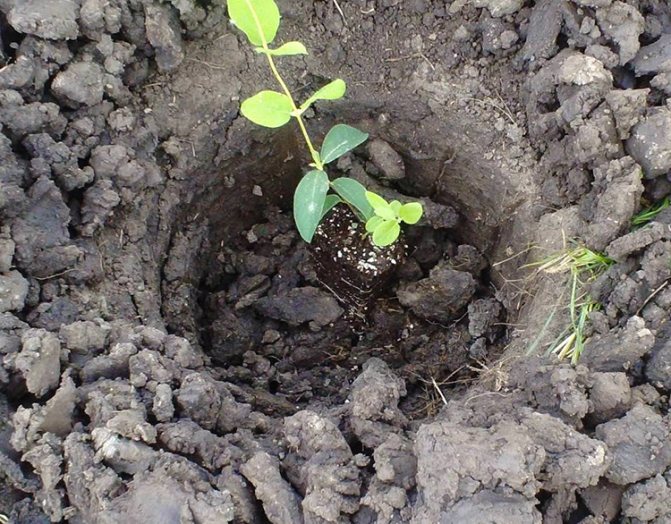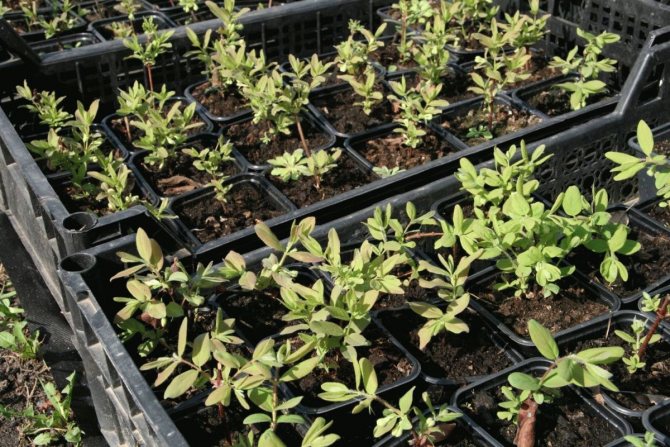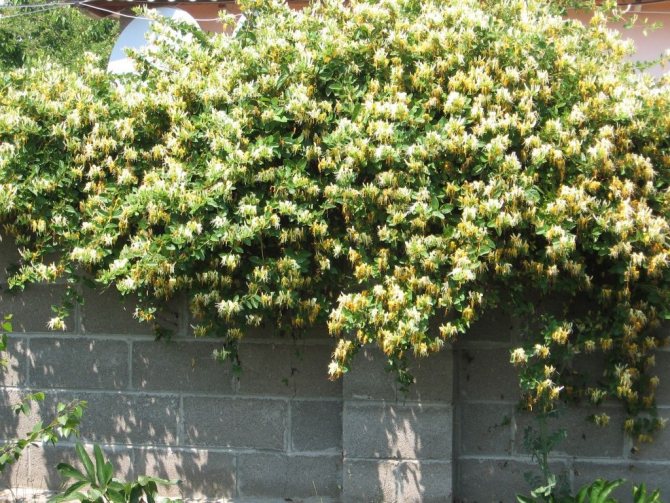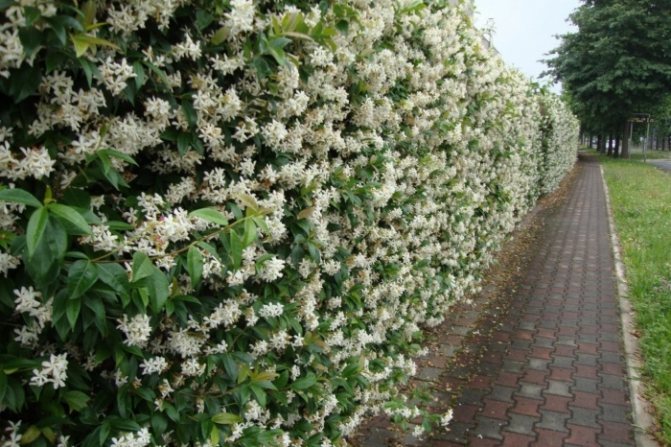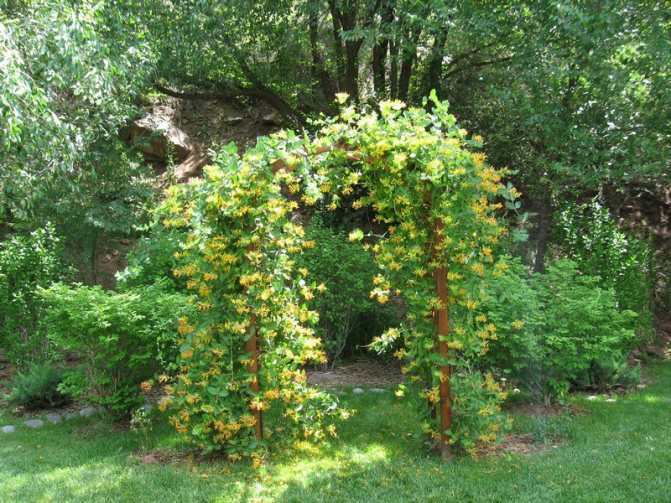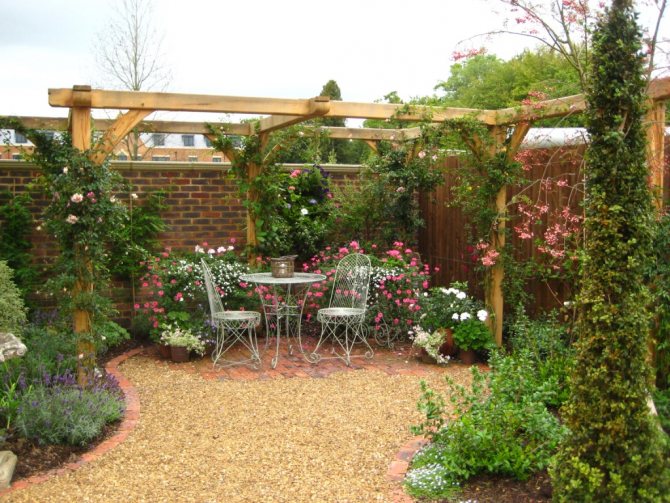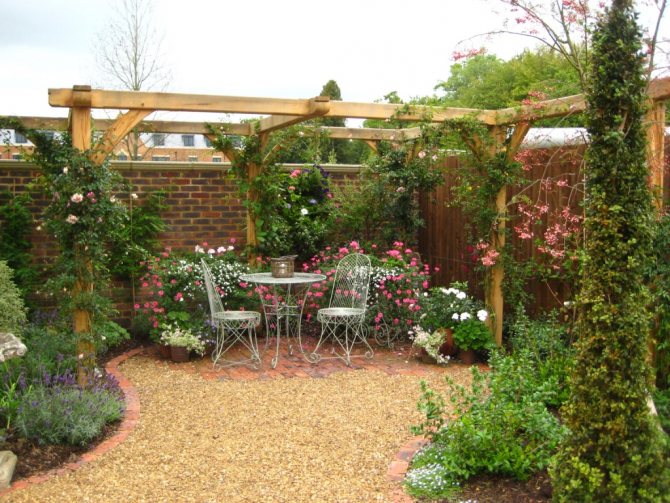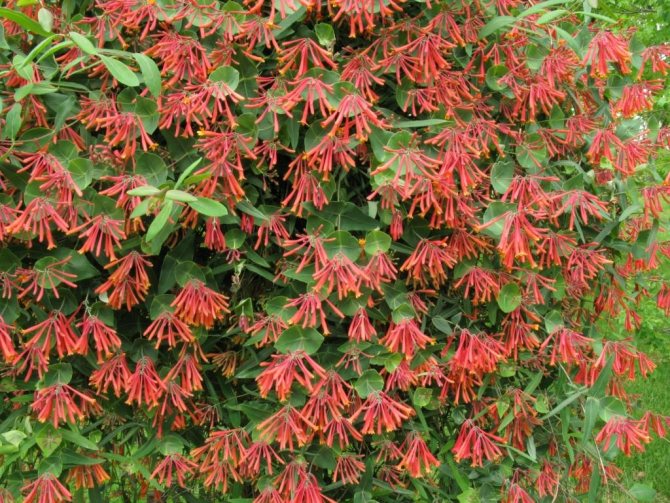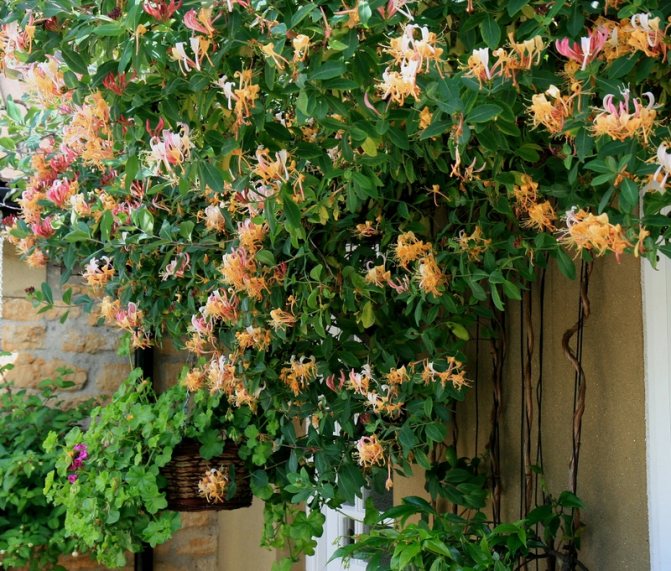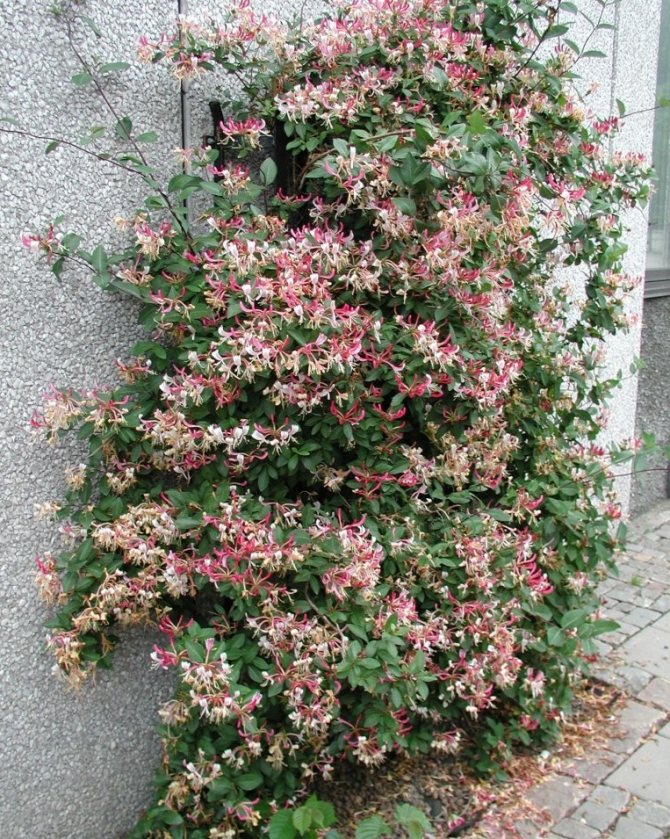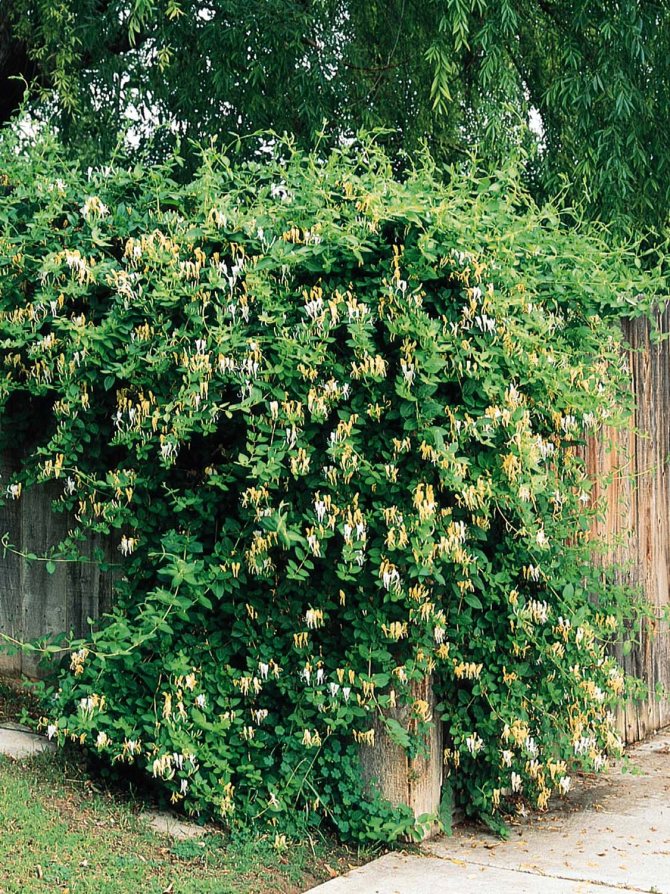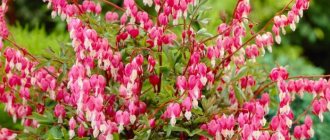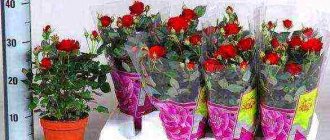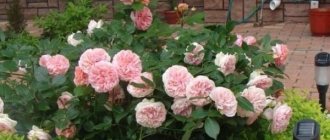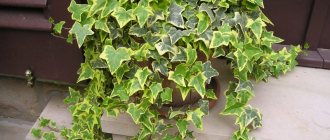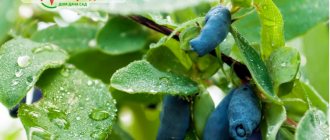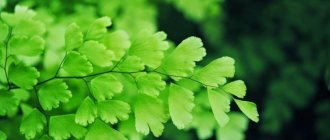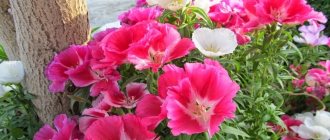Beautiful fragrant honeysuckle flower
In the description of honeysuckle, you can find many conflicting characteristics, because this family includes tall and low, woody and liana-like shrubs with edible or ornamental fruits. The thing is that on earth there are about two hundred species and much more varieties of honeysuckle.

Curly honeysuckle - aristocrats among the lianas
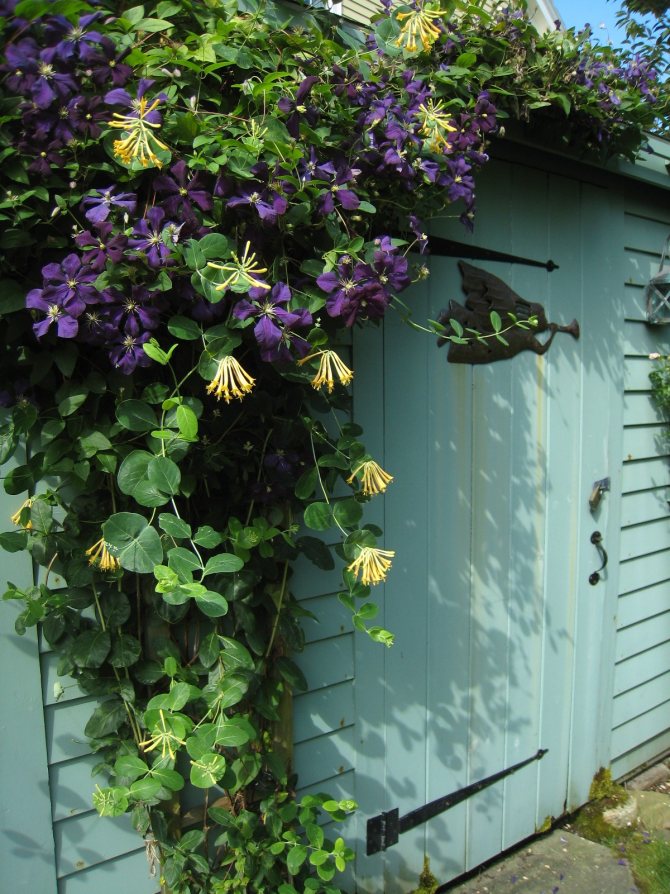

Honeysuckle flowers Honeysuckle have a complex "cascade" shape and change their color when blooming


Honeysuckle berries
General information about the culture
Honeysuckle does not belong to selection crops, but is a plant growing in the wild. Honeysuckle of this species grows in the Caucasus and southern Europe. The shrub has been known since ancient times, but then only rich and wealthy nobles could afford to grow it.
The southern plant has been subjected to various tests. The breeders wanted to develop varieties adapted to different natural and climatic conditions. As a result, now even the inhabitants of the North will be able to afford to grow the honeysuckle Caprifol.
Decorative climbing liana can grow up to 5-6 m in height. The bush reaches its maximum growth 5 years after planting. Subject to the rules of cultivation and care, Kaprifol's honeysuckle is able to delight with its beauty and aroma for almost half a century.
The characteristics of the plant are as follows:
- shoots are light green in color, which, after exposure to light and heat, acquire a pink tint;
- with maturation, the stems of the plant are covered with bark, which peels off over time;
- the leaves are elliptical;
- vines exude a pleasant aroma;
- the plant blooms with small fragrant flowers, collected in small bouquets.
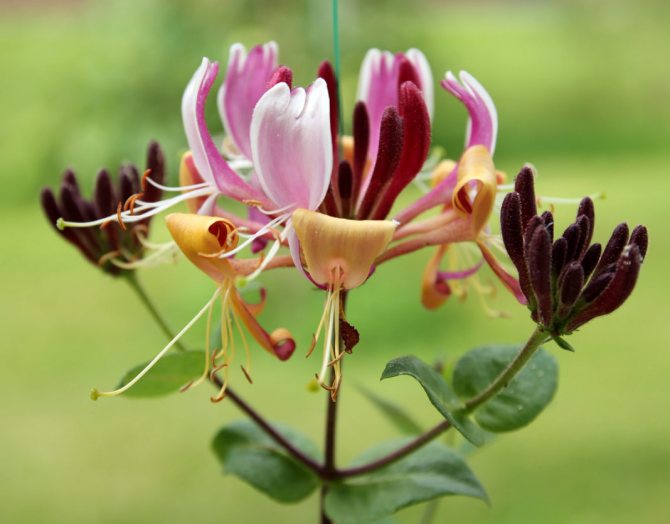

What does honeysuckle look like?
In nature, there are several shades of honeysuckle: red, purple, pink, yellow and white. Flowering lasts 2-3 days, after which the buds wither and crumble. But it doesn't matter, because the bush pleases flowers throughout the season. After a flowering period, orange berries begin to set on Honeysuckle Honeysuckle. They are not suitable for food, but are purely decorative in nature. The shrub belongs to honey plants, so it can be planted near the apiary.
Compatibility with other plants, interior items
To form a unique picture of the ennobled territory, it is required to use not only the variable variety of vegetation in height, shape and color, but also to take into account the need for the correct selection of the species palette. Thanks to the latter, you can harmonize the surrounding space. If we talk about the decorative properties of honeysuckle, then vines are ideal for decorating vertical supports, arched structures, fences, low buildings, terraces, as well as trellises, stairs, etc. The most picturesque effect can be achieved when creating combined landings. The most beneficial neighbors for honeysuckle can be coniferous shrubs and roses with long shoots, creeping or arched.
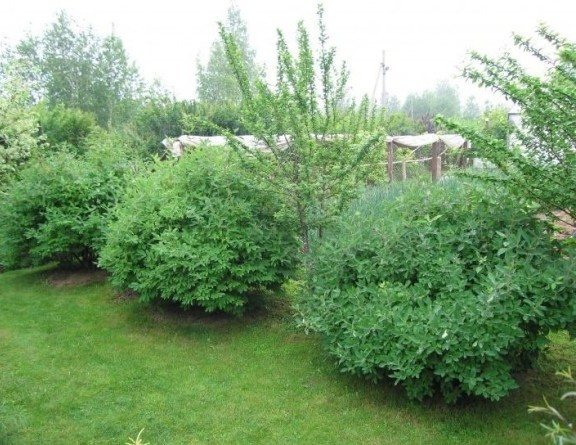

When forming a new image of territories, the ability of colorful honeysuckle to be an ideal material for decorating walls and creating hedges is taken into account.Dwarf plant varieties look great in the format of rocky gardens, alpine slides and mountain slopes. Specialists also use the delicious aromatic properties of honeysuckle: certain varieties form special aromatic zones.
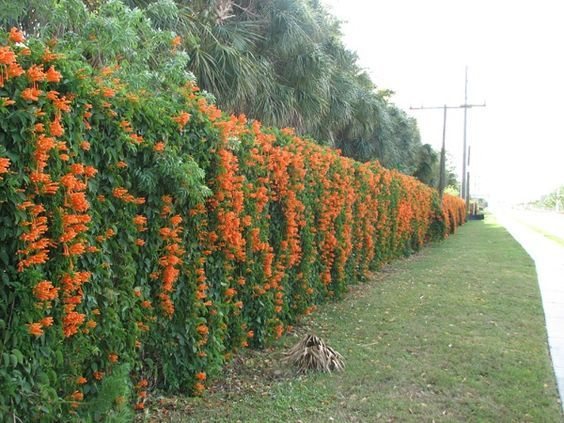

Experts successfully form spectacular natural compositions, combining a "captivating dream" with hawthorn, cherry plum, hazel, Iberis and other plants.
Do not forget that the shrub also looks impressive in single plantings.


Thinking about the formation of a new look for territories, it is worth remembering that honeysuckle is a gratifying material for a creative approach. With the right choice of the type, you can create unique compositions from:
- erect shrubs (common honeysuckle, Tatar, blue, Maaka, shiny and fragrant, veil, alpine);
- climbing plants (Honeysuckle, Japanese, Brown, Thälmann, climbing, Etruscan, Hecrotta).
Advantages and disadvantages
The main advantage of the Caprifoli honeysuckle is its beauty, which is why many designers often use the bush as an element of landscape design. In addition, the plant attracts with the following qualities:
- It does not require special care;
- has a variety of colors;
- quickly adapts to living conditions;
- smells good especially in the evenings;
- growing rapidly;
- able to withstand many sores and pests.
Along with numerous advantages, the shrub also has certain disadvantages. Branches need to be pruned all the time so that the hedge does not lose its attractiveness and shape. When disembarking, you need to think about the support option. It is undesirable to transplant a plant planted in one place, because it may lose its external data. Honeysuckle loves water, so watering is not necessary often, but a lot.
In design
Honeysuckle Honeysuckle in landscape design provides a variety of decorative possibilities. The climbing plant is popular not only with amateur gardeners; professional designers use it with pleasure. Liana will become the best assistant, if necessary:
- Conduct zoning in the garden or on the site.
- Hide an ugly fence or building.
- Decorate a gazebo, terrace or staircase, any vertical supports.
- Get a hedge. A rapidly growing liana, planted next to a chain-link netting, will delight the owners of the house with an unusually picturesque fence.
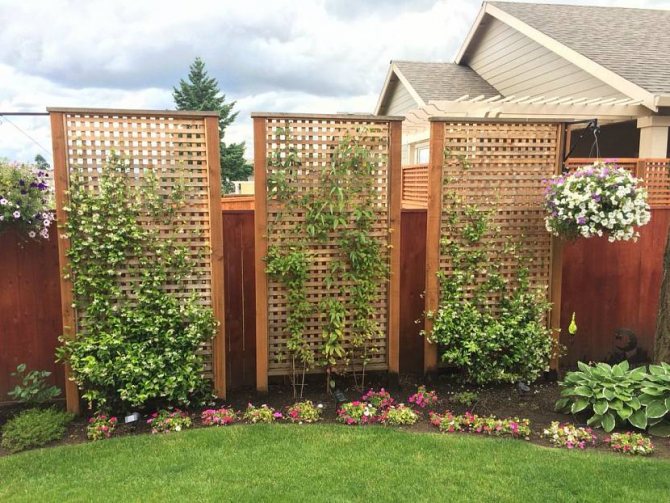

Backyard Source i.
An important advantage of the plant is that it grows quickly in height and does not take up much space. A series of arches over the garden path can become a decoration of the garden, especially if you plant plants with alternating contrasting colors.
Sometimes the lower part of an adult vine is bare. To hide the flaw, honeysuckle is planted with other plants; it gets along well with curly nasturtium or climbing rose. A combined planting with conifers, wild grapes and clematis will look beautiful.
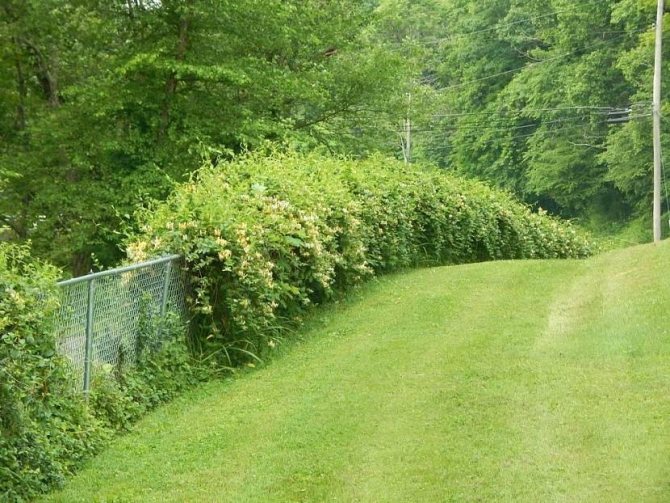

Hedge Source calondono.co
This might be interesting! In the article at the following link, read about the landscape design of the park.
Varieties and their features
Caprifol is considered the most beautiful of all ten representatives of honeysuckle. However, other types of ornamental bush should not be ignored. These include:
- Belgica Select is a liana with large leaves. During the flowering period, it throws out pink and purple flowers, which are then reborn into red berries. It is advisable to place the honeysuckle in a sunny place. The bush reaches a height of 3 m. It blooms in May, but re-formation of buds is possible in July-September;
- Harlequin - has variegated leaves, pale pink buds that brighten closer to the edge. Liana grows well in sunny areas, grows up to 3.5 m. Great for shading gazebos, fences and arches;
- Graham Thomas - has elongated white-yellow flowers, grows up to 5 m.The leaves of the plant are dark green above, and gray-gray on the lower side. Turn yellow in autumn. Buds are formed from May to June, orange fruits appear in July;
- Inga caprifol is a variegated variety with red, pink, yellow or white flowers with a strong aroma;
- Thälmann's honeysuckle has rich yellow flowers that appear in June-July. Can grow up to 7.5 m in height.
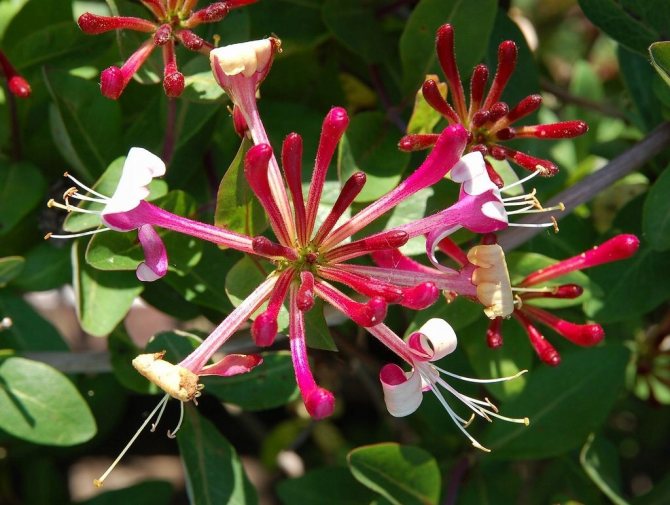

Honeysuckle Honeysuckle Belgica Select
Whichever variety of honeysuckle is chosen, it will be a good solution for arranging a shady place on a personal plot.
Shelter for the winter
Special attention should be paid to the shelter of honeysuckle Kaprifol for the winter. Despite the fact that this culture normally tolerates both frost and hot weather, it is advisable to shelter it from severe frost in winter.
The winter hardiness of the plant can be called moderate. For example, in central Russia, a bush can winter without shelter, but only if its roots are covered with a layer of snow. In the northern regions, covering the crop with a layer of organic mulch or non-woven covering material is a prerequisite for growing.
Criteria for the selection of planting material
The growth of the plant depends on the health and strength of the seedlings. It is recommended to choose seedlings at least two years old with 2-3 branches and a length of 30 cm.Other nuances should also be taken into account:
- branches should not be dry with a damaged top layer. Elastic and whole shoots are considered good;
- there should be no stains on the bark. Their presence speaks of the poor condition of the bush;
- diseases of the root system are manifested by growths, poor development, an unpleasant odor emanating from the shoots. Such a plant will either not grow at all, or its growth will be greatly slowed down.
Before buying cuttings, they must be examined and, if there are no visible flaws, they are bought and planted in their summer cottage.
Vine planting procedure, necessary conditions and preparation
Honeysuckle Honeysuckle is warm and light-requiring. For it, you should choose an open sunny area, while protecting it from cold drafts. Plant a vine on the south or east side of the fence, the wall of the building. In the shade, the growth rate drops sharply, the buds do not fully open.
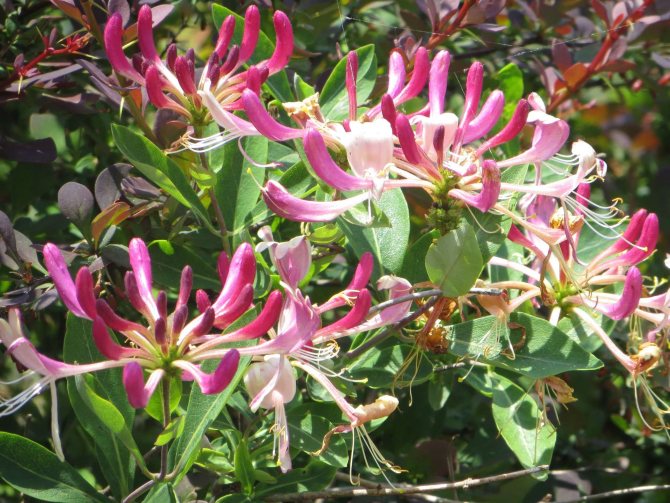

Planting honeysuckle Honeysuckle in an open place, where it will receive enough light and heat - a guarantee of abundant flowering in the future
Another plant categorically does not tolerate groundwater, approaching the soil surface 1.5 m and closer. This provokes root rot and the death of the vine. For the same reason, lowlands and clayey soil, where water also stagnates, are not suitable. As for the rest, Caprifol is undemanding to the quality of the substrate, as well as to its acidity (indicators can vary within 4.0-7.7). But the best option for it is a fertile air-permeable soil with a pH of 5.5–6.5.
The place for this honeysuckle is highly recommended to choose immediately and successfully. She really does not like a transplant, after it she withers for a long time, gets sick, stops blooming, and often dies altogether.


The place for planting honeysuckle Caprifol is chosen taking into account all the important nuances - it is not a fact that an attempt to transplant a plant will be crowned with success
Caprifol is planted most often in spring, in April-May. Landing in July-August is also permissible. When planting in autumn (especially in central Russia), the seedling may not tolerate winter frosts, even under cover.
Two-year-old seedlings take root best of all. They should have 2-3 shoots about 30 cm long. The bark should be elastic, uniform in color, and the branches themselves should be elastic. The roots are flexible, without growths, mold and rot.
Depending on how many specimens are planted, you need to dig a hole or trench about 50 cm deep and wide. The distance between seedlings when forming a hedge is 50-60 cm.Any drainage is poured into the bottom with a layer 5–8 cm thick. The hole or trench is half filled with a mixture of turf soil extracted from it, humus, peat chips and coarse sand (3: 2: 1: 1). Fertilizers need not be applied to the fertile substrate, otherwise add another 25–30 g of nitrogen, 60–80 g of phosphorus and 40–50 g of potassium fertilizer. Prepare the landing site 2-3 weeks before the procedure.
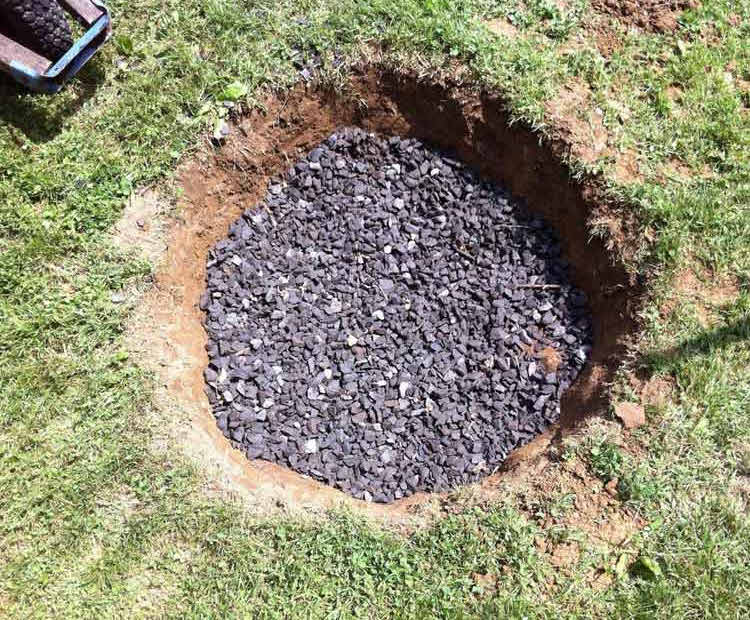

Drainage at the bottom of the planting pit will prevent water from stagnating at the roots of the plant
Caprifol "creeps" not only up, but also to the sides. Therefore, it is necessary to provide a support for it. It is better if the material is slightly rough (for better "grip"). The support must be strong enough to support the significant weight of the plant. Arches braided with honeysuckle, gazebos, posts, frames made of laths in the form of a lattice, "hut" look very beautiful.
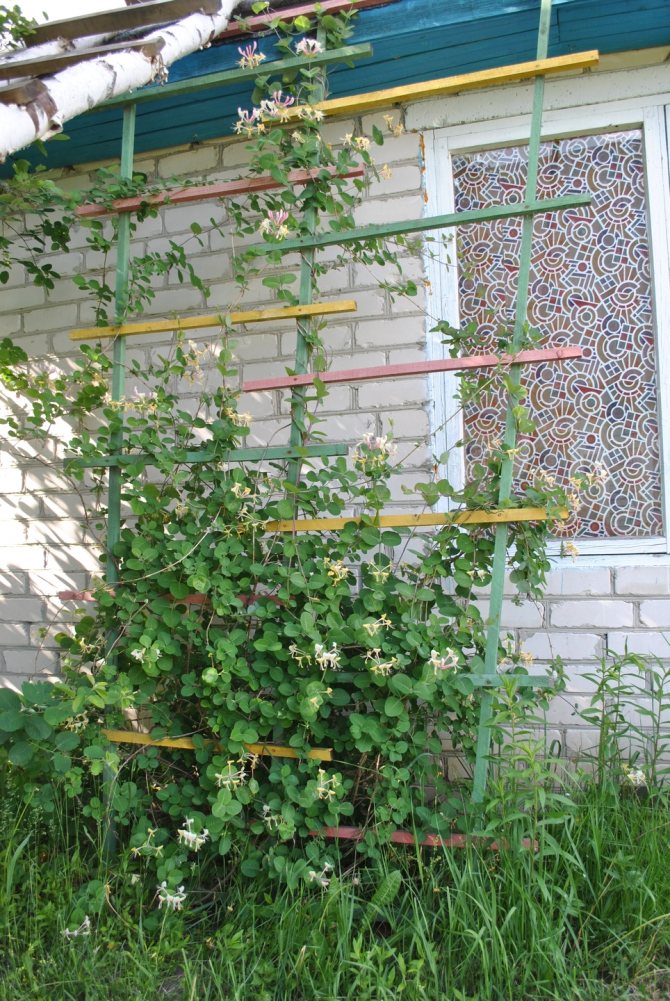

Support for honeysuckle Honeysuckle is easy to make yourself - you are limited only by your own imagination
Planting honeysuckle Honeysuckle is easy:
- For a day, soak the roots of the seedlings in warm water or a solution of any biostimulant (you can use both purchased preparations and folk remedies). If the ends are dry, trim them back to living tissue.
- Moisten the soil at the bottom of the pit or trench, using 4–5 liters per plant.
- Plant the seedlings by straightening the roots and preventing them from curling upward. Fill the holes with soil, periodically compacting it and leaving the root collar 4–5 cm above the soil surface.
- Water the plant again (8–10 l), mulch the soil.
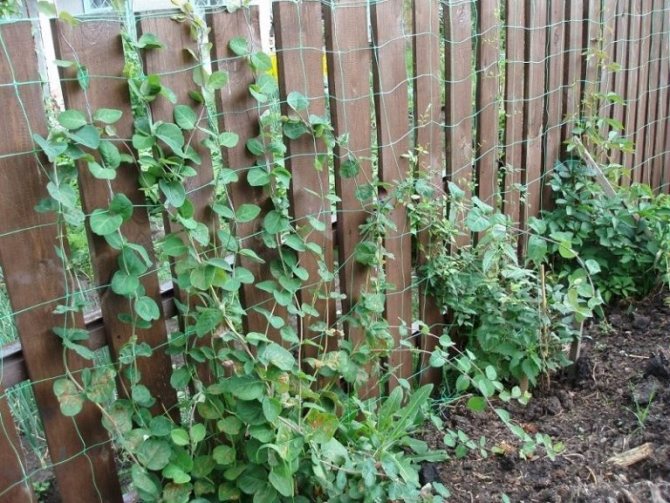

The interval between adjacent seedlings of honeysuckle Honeysuckle when planting depends on how the plant will be used - they are most closely planted when forming a hedge
Video: tips for planting curly honeysuckle and caring for it
The nuances of planting honeysuckle Caprifol
Successful cultivation of honeysuckle Caprifoil includes choosing the right timing, carefully following the sequence of planting stages and further caring for the young plant.
Boarding time
The honeysuckle bush is planted in early spring in open ground. Until this time, the seedlings are kept warm, for example, in a greenhouse or greenhouse. If Caprifol is planted in summer, it will begin to grow in early autumn, and the fruits will appear at the end of the season. During this period, the plant fades quickly. It is advisable to plant a bush in a place where it will grow constantly, because transplanting the plant is extremely difficult.
Site selection and soil preparation
When planting honeysuckle Caprifol, you need to carefully choose a place. Choose an area with fertile and loose soil, avoiding areas with excessively dry soil. The bush is light-loving and will delight with flowering only in a well-lit place.
For the full development of the plant, he needs to build a support. Any vertical surface is suitable as it: a fence, a gazebo, an arch, a pillar, etc.
The plant is demanding on the soil. Sandy loam or loamy soil is suitable. If there is none on the site, then peat acidic or moist limestone lands are selected.
If you plant honeysuckle in a place with deep underground waters, its roots will start to rot and it will die. To prevent this from happening, drainage is done. Before landing, the earth is loosened, saturating it with oxygen.
You can increase the fertility of the land with a mixture of peat, sand, humus and sod soil as the main component, taken in a ratio of 1: 1: 1: 3. Ideally, the soil environment should be neutral with an acidity in the range of 7.5-8.5. If the indicators are higher, the land is treated with slaked lime. It should be remembered that the plant does not develop very well on clay soil.
Landing scheme
Planting and follow-up care is extremely important for the full development of Honeysuckle Honeysuckle.A hedge is planted in pre-formed holes, 50x60 or 50x50 cm in size. The excavated soil is mixed with rotted manure and peat. At the bottom of the pits, brick chips are poured out, which will act as drainage. The roots of the prepared seedlings are pruned. Then they "put" in the hole, distributing the roots. The planted material is watered with settled water, the empty space is covered with earth and watered again. Sprinkle the entire planting site with mulch.
Honeysuckle care
Honeysuckle Honeysuckle is unpretentious to care for, grows quickly and winds along the support. Regular monitoring of growth will help to avoid diseases, improper bush formation and depletion of shoots. The earth should not dry out, and when weeds appear, get rid of them immediately.
Watering
The plant is unpretentious to care for, the main thing is to water it periodically. If the summer is rainy, then there is no need for additional watering. Otherwise, the root system will rot.
Honeysuckle Honeysuckle does not tolerate severe drought, so in the heat, double the number and abundance of watering - 2 times a week. Make sure that the ground at the base of the shrub does not crack, and moisten it.
Top dressing
Honeysuckle grows well. To speed up this process and get a hedge faster, use additional feeding. The choice of fertilizers and nutrient compounds depends on the season:
- In the spring, the plant needs nitrogenous fertilizers. Good nutrition is a manure or poultry manure solution. Concentrated fertilizers can burn the root system. To prevent this from happening, dilute with water in a ratio of 1:10.
- In autumn, focus on phosphorus and potash fertilizers; use rotted manure or humus for feeding. Special superphosphates are especially in demand during this period.
- In the summer, use a nitrophosphate, dilute 20 g of the composition in 1 bucket of water.
For more information on how to fertilize honeysuckle in spring, summer and autumn, read the next article.
Loosening and weeding
Honeysuckle does not tolerate neighborhood. Before planting Caprifoli, remove all weeds and perennials, weed the ground when the bush grows. Fluffy soil receives heat and oxygen. If there is no mulch, weed the soil 2 times a week.
Pruning and shaping the bush
When growing seedlings, choose the 3 strongest shoots, carefully pick the rest. When the honeysuckle is high, trim the tops. This is necessary for the growth of Caprifoli in breadth and the formation of a hedge.
When the hedge expands, the lower leaves fall off, gaps appear. To disguise them, plant another bush that will cover the white spots on the vertical support with young leaves.
If the plant is pruned regularly, it grows faster, produces beautiful, rich flowers and attractive fruits. Without pruning, you cannot create a perfect landscape design. After winter storage, cut off dead and weak shoots in the spring (carry out a sanitary image of the bush).
For pruning honeysuckle Caprifol, see the following video:
Features of care and reproduction
Honeysuckle reproduces Caprifol in one of three ways: seeds, layering or cuttings. Each of them has its own characteristics.
The artisanal liana can only be propagated with fresh seeds collected in the second year of the plant's life. Before sowing in the spring, they must go through a cooling period in a humid, aerated environment. This will help wake the embryos out of their sleep state and begin to develop. Seeds are sown at home, and grown seedlings are planted in open ground.
Cuttings for planting are harvested in August. With the onset of autumn, they are planted in a special nursery with fertile soil, and in the spring they are transferred to a permanent place.
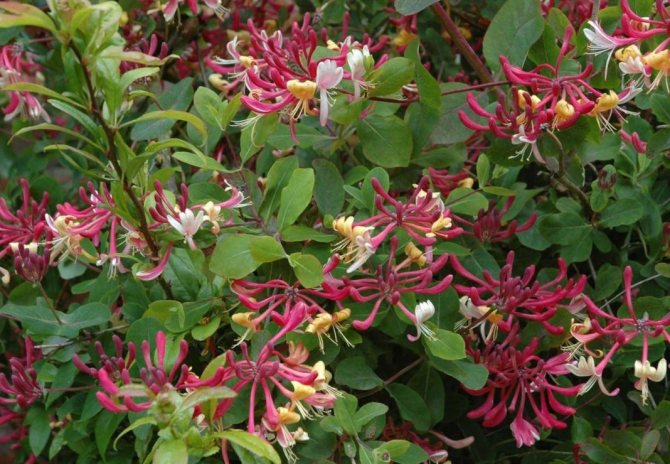

The artisanal vine can only be propagated with fresh seeds.
It is quite simple to propagate honeysuckle by layering.To do this, take a branch with roots from an adult plant, tilt it to the ground and sprinkle it. When the cuttings take root, they are transplanted.
In summer, honeysuckle is watered only up to 5 times, but very abundantly. If the summer is rainy, the number of procedures is reduced to 2-3. After watering or passing rain, the space around the bush must be loosened so that there is no stagnation.
Honeysuckle bushes are very fond of fertilizers, especially natural ones. Humus, compost or manure are suitable as a subcortex. In the autumn, it is recommended to scatter ash under the roots. The time for top dressing is spring. About a bucket of fertilizer is poured under each bush. They are introduced in the spring about a bucket under each shrub. A good effect is given by ammonium nitrate in the amount of 20 g per sq. m.
Gardeners reviews
★★★★★
Karina, 35 years old, housewife, Pavlov Posad. At my dacha, honeysuckle grows over the fence. Such a hedge looks catchy and spectacular, especially when beautiful purple flowers appear in the summer. But the flowers quickly recede, but the leaves are green almost all year round. The idea is interesting, but you have to constantly look after it. Without regular watering, the leaves turn pale and wither, and in winter you have to remove the branches from the support. In general, I am satisfied, but there are some difficulties.
★★★★★
Mark, 42 years old, lawyer, Zhukovsky. At my dacha, the gazebo is decorated with honeysuckle Caprifol. It was the right decision in my life. The plant creates a pleasant shade, has beautiful flowers and a delicious aroma. After a hard day, I come to the dacha and rest my soul. The plant does not require special care: I water it on weekends, feed it once every 2-3 weeks, and hide the branches under slate for the winter. There are no difficulties, but the beauty is indescribable. Initially I tried other varieties, so they did not take root.
★★★★★
Svetlana, 37 years old, accountant, Sochi. Honeysuckle Honeysuckle has a pleasant, persistent aroma. It calms and relaxes, which is especially important after a working day. At first, the gazebo was equipped at home, then the fence was surrounded by honeysuckle. When the plant is in bloom, it is a magnificent sight. The flowers are voluminous, of different shades. It doesn't last long, but there is something to see. Among the disadvantages: for the winter you have to remove the hedge and store it in a warm place. The second disadvantage: if you transplant honeysuckle, it rarely takes root in a new place. I was convinced myself.
Honeysuckle Honeysuckle is used as an ornamental shrub. It perfectly complements any vertical surface, allowing you to enjoy gorgeous flowers and an unforgettable scent. Such a plant is often used by landscape designers in their work.
0
Diseases and pests
You can find out that honeysuckle is sick by its withering appearance, yellowed and falling leaves. A painful look can appear if the following pests have attacked the bush:
- fingerwing caterpillar - eats half-ripe berries, after which they wither and fall, never having time to ripen completely;
- leaf roll - eats leaves and sucks the juices from the plant, which leads to the wilting of the entire bush;
- scale insect - a parasite that violates the integrity of the bark and drinks the juice of the plant;
- plant aphid - affects the leaves, after which they turn yellow and fall off.
It is possible to get rid of pests and prevent their appearance with the help of the preparations "Conifor", "Inta-VIR", etc. They are sprayed with bushes according to the instructions.
Another attack that can harm Caprifoli is a fungus. It manifests itself in the form of tubercles on the leaves, the crown of the bush begins to wither and fall off. Sick shoots must be removed immediately, and the rest of the plant is treated with a solution of copper sulfate or Fundazol. If rescue measures have not yielded positive results, the bush is completely dug up and burned.
With advanced diseases of honeysuckle, you can try chemicals: "Antitlin", "Biotlin" and "Akarin". For the prevention of insects, the bush is sprayed with a 5% urea solution in the fall.
How and what to fertilize and feed
Goat honeysuckle reacts positively to feeding, only this must be done correctly:
- at the end of autumn, we apply potash and phosphorus fertilizers, add compost, humus under the bushes;
- in spring - the vine needs nitrogen, it is also useful to water it with diluted bird droppings or mullein.


Feed the plant twice a season
Features of pruning and formation of a bush
Pruning honeysuckle Honeysuckle helps to improve its development, reduce soreness and activate flowering. Only plants from 6 years old need it. The procedure is carried out in autumn and spring. All frozen and dried branches or those with traces of the disease are removed. In order for the sun's rays to penetrate into the bush, some of the branches in its middle must also be removed. Spring pruning is done after young buds appear. The part of the shoot freed from the kidneys is removed. With a radical pruning, the cut points are sprinkled with ash or activated carbon.
When the honeysuckle Caprifoil reaches the required height, its tops are pinched, thereby allowing the lateral branches to develop. Then they carry out decorative pruning of the shrub, giving it a beautiful shape.
The first pruning procedure is carried out in the first year, immediately after planting the bush in a permanent place. All underdeveloped shoots are removed from young animals, leaving only the strongest, about 3-4 pieces. The stems are made shorter by one third of their length. All subsequent pruning is performed every 5 years, removing dry and damaged branches. If the bushes are very neglected and have a thickened crown, then all old stems are cut off slightly above their base.
Carrying out regular care of climbing shrubs, you can create a beautiful relaxation area on your site, enjoying the scent of flowers in a pleasant coolness.
Nuances of formation
Liana, which is planted as a decoration for a summer cottage or garden, needs pruning. The task of every gardener is to shape the shape of the bush in such a way that not a single shoot gets out of the picture.
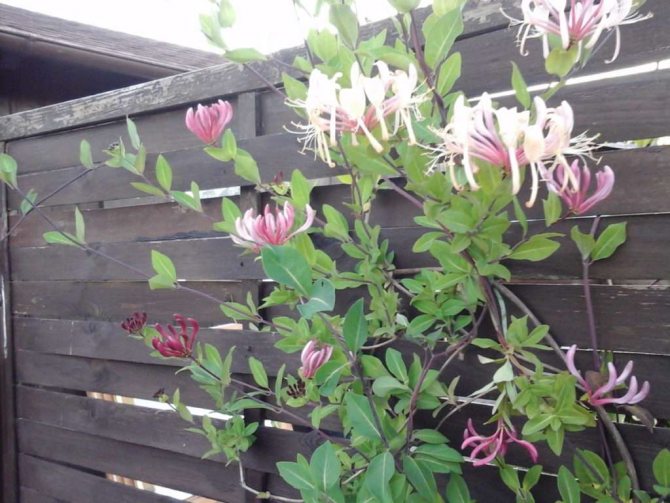

For this, several haircuts are carried out during the growing season of the plant:
- First formation of honeysuckle carried out until the moment of development, after winter sleep - the plant is cut off until the buds are swollen and the juice begins to move. In spring pruning, all non-wintered shoots are removed, and healthy lashes are trimmed to the required length. The creation of a single shape of a ball, column, wall, hedge is a must. The shape of the plant can be given by installing the appropriate supports and tying up the shoots in several pieces.
- Second formation carried out after the plant has faded. As a rule, the honeysuckle is formed for the second time in the third decade of June - the first of July. At this moment, the peak of the liana vegetation passes, and "gaps" begin to be seen in the structure. During the summer formation period, the lower young branches and those that have grown in a cut with the shape are removed. It is worth noting that it is not worth removing the supporting branches, since it is thanks to them that the plant maintains a rigid shape.
- Third pruning - sanitary. It is carried out after the last leaf falls from the vine.
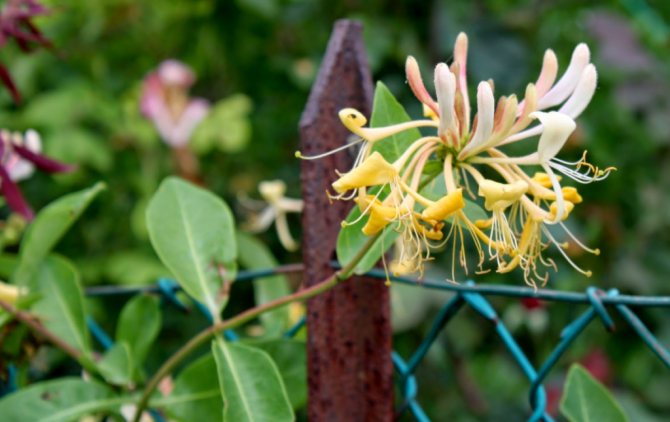

How to propagate Caprifol
For hybrids bred by breeders, only vegetative methods are suitable to ensure the preservation of varietal traits. Natural honeysuckle can be propagated by seeds, but the process is long and laborious.
Seed Honeysuckle
The method is not popular, since Caprifoli seeds do not differ in germination. They are collected from ripe berries, washed and dried. Stratification is mandatory - the seeds are mixed with wet sand or peat, poured into a small container and put into the refrigerator until February-March next year, periodically spraying the soil. Another option is stratification in the ground: seeds are planted in August in grooves 2-3 cm deep, sprinkled on top with a mixture of peat and humus (layer 10-12 cm).
Seeds from the refrigerator are planted in shallow containers in a mixture of peat, humus and sand (2: 1: 1). The substrate should be slightly moistened, they are also sprinkled with soil on top and sprayed. Then you need to create a "greenhouse" using plastic wrap or glass and do not remove it until shoots appear, only airing the planting for 5-10 minutes daily.
You can plant seeds directly into the ground, but in this case, the already low (less than 50%) germination rate still falls. In the summer, they will need regular watering as the soil dries out and protection from direct sunlight.
Honeysuckle seedlings are transplanted to a permanent place next spring, when they grow to 25–30 cm. In the first two years, they need careful shelter for the winter.
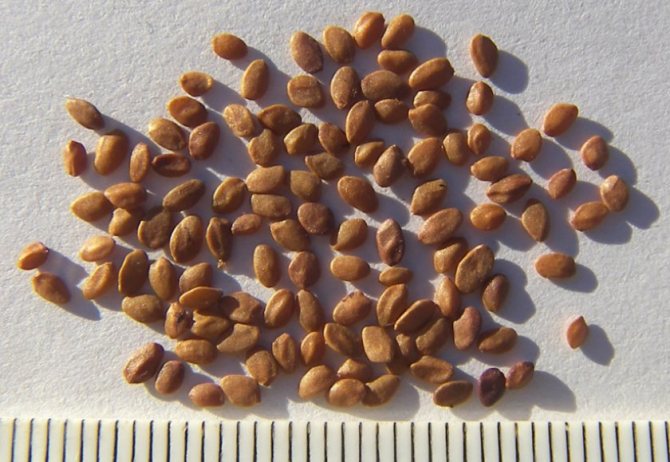

Honeysuckle seeds Honeysuckle are not distinguished by good germination and require pre-planting preparation, therefore, amateur gardeners rarely resort to this method of reproduction.
Cuttings
Planting material is harvested in mid-July. Choose older shoots that break easily. They are cut into cuttings about 10 cm long with 2-3 growth buds. Only the top two leaves are left, cutting them in half.
The lower cut is made obliquely, cuttings are soaked for 3-4 hours in any root formation stimulator. They are planted in a greenhouse at an angle of about 45 ° with an interval of 15-25 cm, deepening by about a third. For the winter, the plantings are carefully insulated, in the spring the surviving specimens are transferred to a permanent place.


The grafting procedure for honeysuckle Caprifoli follows the same algorithm as for any other plant that can reproduce in this way
Video: propagation of honeysuckle by cuttings
Rooting layers
The method is very popular due to its simplicity. It is enough in April to bend the shoot to the ground, lay it in a trench 5–7 cm deep, cut the bark from below by 1.5–2 mm, fix it in this position and sprinkle it with humus. The area is watered abundantly during the summer. By the end of summer, shoots should appear. The seedling is separated from the mother plant and transplanted to a permanent place the following spring, providing a secure shelter for the winter.
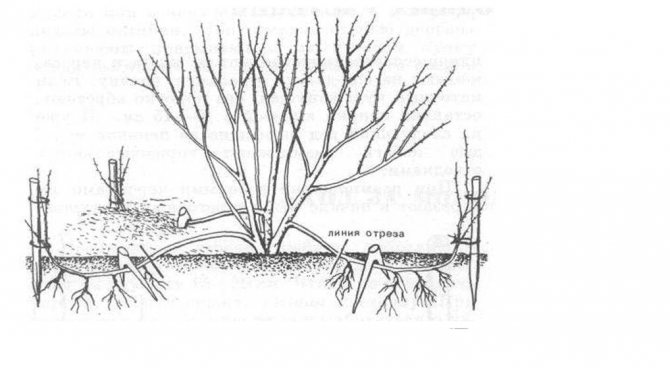

Rooting of layers for honeysuckle Caprifol is almost guaranteed to give a result, the gardener spends a minimum of time and effort on such reproduction
The need for proper pollination
Honeysuckle has one interesting feature. Its yield depends on the quality of pollination. Moreover, the plant prefers cross-pollination. In fact, one bush is capable of producing crops, since the plant is monoecious. However, in this case, the yield will be very low, about 500 g of berries from one bush. An increase in the number of plants will not give a noticeable increase in yield - from a dozen bushes of the same variety, a yield of about 1 kg per bush is obtained.
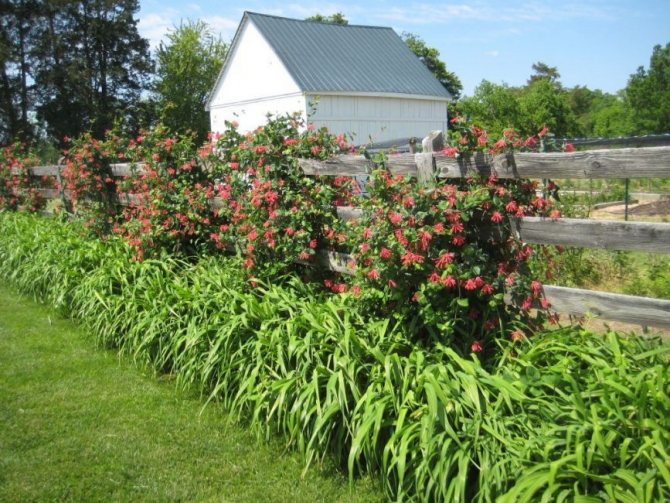

Compact planting of honeysuckle in two rows
To obtain more or less significant yields, it is optimal to plant 10-15 trees of different, but similar in origin varieties. This is how it will be possible to achieve effective cross-pollination. Planting of three trees of each type is recommended. In this case, the yield will be about 5-6 kg from each bush.
In addition, it is recommended to plant bushes not in rows, but in a more compact way, for example, in the form of a square or triangle with an even distribution of varieties along its corners and sides.
Pollinators also play an important role in successful cross-pollination. Honeysuckle is pollinated by bees, but bumblebees are best suited for this role. If you have bumblebee nests on your site, you should not get rid of them to get a good harvest. You can additionally attract insects for pollination, if at the beginning of flowering the plants are sprayed with a solution of honey or sugar in water with a concentration of 20 ml of sweet substance per 10 liters of water.
Pruning
Some gardeners practice autumn pruning of decorative honeysuckle on a stump, and then wonder why the vine grows poorly. With such care, you should not expect rich flowering from the shrub.
Attention. Honeysuckle and other climbing honeysuckle give flowers on the branches of the second order, therefore, subjecting the plant to a short pruning, you can remain without flowers for the next season.
At 5–6 years of age, vines need only sanitary removal of frozen and broken shoots.
Shrub-type plants, from which a hedge is formed, require regular formative pruning. The event improves the appearance of ornamental varieties, promotes good fouling of the lower branches and heals the culture.
Edible honeysuckle varieties
Unpretentious shrubs are grown throughout the world, there are up to 200 varieties. For the most part, these are early varieties, the plant bears fruit already at the end of May. Harvested throughout the growing season, until the end of August.
- "Bogdana". Hybrid variety bred by crossing. A small shrub with a slightly spreading crown. The fruits are large, oval in shape, sweet and sour taste and lilac-purple hue.
- "Long-fruited". A low, sprawling, rounded shrub. Large-sized cylindrical berries with an intense sweet and sour taste. Early maturing variety.
- "Mascot". High-yielding variety. Powerful bushes up to 2 meters high bear fruit abundantly. Berries are medium in size, with a delicate dessert flavor. A mid-season variety, especially appreciated in the preparation of preserves and jams.
- "Bakchar giant". High, up to 2 meters shrubs with an oval crown shape. Medium early variety, resistant to pest damage and disease. The fruits are very tasty, intense blue color.
- "Cinderella". The medium-sized variety is popular due to the high taste of berries, reminiscent of strawberries in taste. The fruits are suitable for fresh and canned consumption.
- "Azure". Low yield, up to 1-2 kg per bush. Differs in a delicate blueberry flavor, with a slight bitterness. A versatile variety.
- "Fiery oval". Fruits are widely used for making wines and desserts. The shape is oval-rounded, the color is light purple.
- "In Memory of Gidzyuk". The variety differs from the others in its long purple fruits with a tart taste. The berries practically do not crumble.
- "Tomichka". Medium-sized shrub, with elongated, graceful fruits with a thin skin.
- "Volkhova". The variety is great for the middle lane. Unpretentious tall, up to 2 meters, bush with a low level of shedding. The berries are large, with a strawberry flavor.
Almost all varieties of edible honeysuckle are self-pollinated. In addition to gastronomic use, they are used for decorating areas, from which hedges are formed. The shrub looks great in general landscape design compositions. Curly honeysuckle is used in the design of arches, gazebos, vertical gardening of buildings and fences.
Sweet varieties of honeysuckle are widely used in the preparation of desserts, conservation, winemaking. Berries provide the human body with all the necessary vitamins and minerals.
Video:
Construction of a support from improvised means
In order not to spend money on the purchase of ready-made metal or wooden supports, they are made by hand. Here are some ways:
- Assemble a square frame with wooden slats. Sew it with narrow boards diagonally. It is better to make the cladding, first in one direction, then in the other, to get a rhombus. At the bottom they put a box or lay out a flower bed made of bricks.
- Several long sticks in the shape of a cone are dug into the ground, and they are wrapped with a rope at the top. Then make a crate of smaller sticks. The construction, inconspicuous at first glance, quickly becomes overgrown with honeysuckle and becomes a real work of art.
- A plastic net or an ordinary chain-link is pulled between two strong posts.If there is neither one nor the other, you can limit yourself to ropes.
Content
- Listen to the article
- Description Edible honeysuckle
- Blue honeysuckle (blue)
- When to plant honeysuckle
- How to grow
- When to prune honeysuckle
- How to propagate
- Beneficial features
Safety of use
The main danger when using honeysuckle fruits is the inability to distinguish varieties. Since honeysuckle has only 4 edible varieties, there is always a risk of "running into" an inedible one and getting food poisoning.
Wild honeysuckle (in common people "wolfberry") is colored red, black or orange.
Poisonous berries can be harmful, even fatal. But even edible varieties should be used with care and washed before consumption.
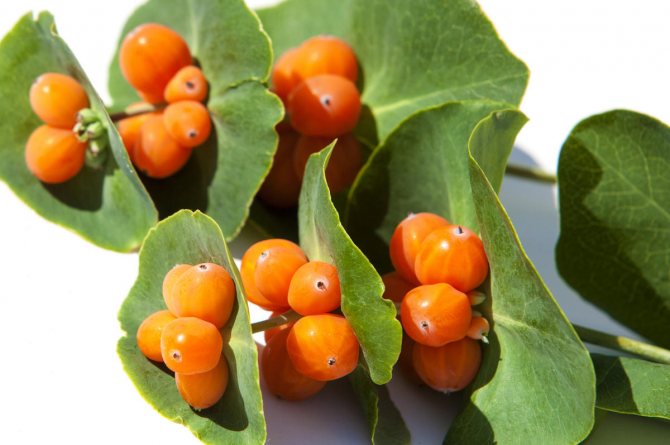

Not all types of honeysuckle are harmless
What varieties are suitable for cultivation in different regions of Russia: table
| Region | Suitable varieties |
| Ural | Sorceress, Long-fruited, Elizabeth, Zest, Lapis lazuli, Lenita, Cubic zirconia |
| Siberia | Bluebird, Amphora, Cinderella, Velvet, Bakchara, Bakchara's pride, Chulym, Roxana, My joy, Parabel |
| Moscow suburbs | Titmouse, Nymph, Chosen, Morena, Amphora, Altair, Violet |
| Kuban | Berel, Viola, Penguin, Malvina, Nightingale |
| Altai | Assol, Velvet, Iliada, Salute, Fire opal, Selena, Narymskaya, In memory of Gidzyuk |
| Far East | Kamchatka, Turchaninov, Altai, Tatar, Caprifol |
The benefits and harms of honeysuckle berries
Edible honeysuckle is a storehouse of vitamins and minerals, berries contain pectin, ascorbic and oxalic acid. It is recommended to use it for pathologies and for prophylactic purposes.
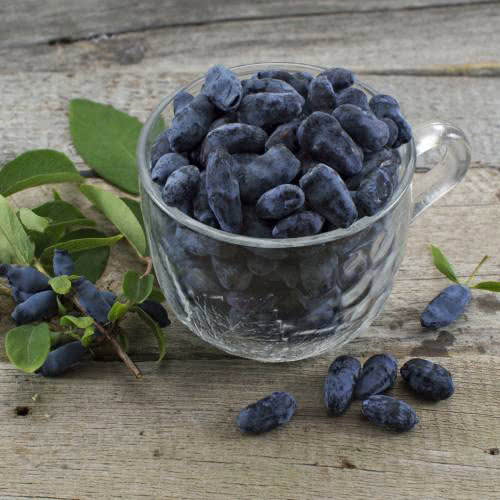

Main advantages:
- strengthening the immune system;
- stabilization of blood pressure;
- lowering the acidity of the stomach;
- healing of ulcers of the intestines and stomach;
- antipyretic properties;
- low calorie content;
- removal of toxins from the body;
- strengthening of blood vessels;
- removal of toxins;
- antibacterial action;
- improved appetite and digestion;
- anti-inflammatory effect;
- improved blood circulation.
Gargling with decoctions of berries is recommended for inflammatory processes and sore throat. Washing the eyes in case of infectious processes. Honeysuckle juice is added to the bath to relieve pain in the spine and joints.
The fruits are good for both adults and children. They are used for cosmetic purposes to eliminate acne and inflammation of the skin. Honeysuckle masks are used for dry and rough skin. They have a healing and regenerating property, the effect is noticeable after the first application.
Honeysuckle is useful for the body in case of gastritis or stomach ulcers, in the initial stages of atherosclerosis. Decoctions of fruits relieve fever during illness, tone up and soothe.
It should be borne in mind that the use of honeysuckle fruits can cause an allergic reaction. It is especially not recommended to eat it in large quantities. Allergy sufferers can cause an attack of pollen during flowering.
Reference! It is contraindicated to give berries to children under 5 years of age.
During spring beriberi, doctors advise drinking honeysuckle decoctions to strengthen immunity and to prevent beriberi. There is more vitamin C in honeysuckle than in rose hips.
The beginning of fruiting in honeysuckle
The average life span of honeysuckle is 20 - 25 years. The crop yield depends on age and increases up to fifteen years of age.The first harvest of honeysuckle gives at the age of 3-4 years.
If honeysuckle was propagated by cuttings, then the first fruits can be obtained the next year after rooting. The productivity of a shrub at the age of 7 years is just over a kilogram. An almost double increase in yield can be achieved by planting several varieties of honeysuckle nearby.
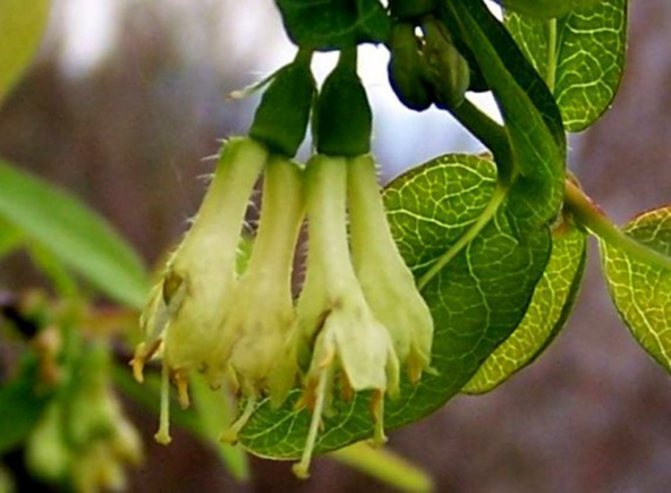

How edible honeysuckle blooms
The flowers are delicate yellow, beautifully shaped like a gramophone with long stamens, collected in inflorescences. They grow in pairs in one ovary. Long bloom, up to 1 month. If the honeysuckle does not bloom for the first 1-2 years after planting, do not panic.
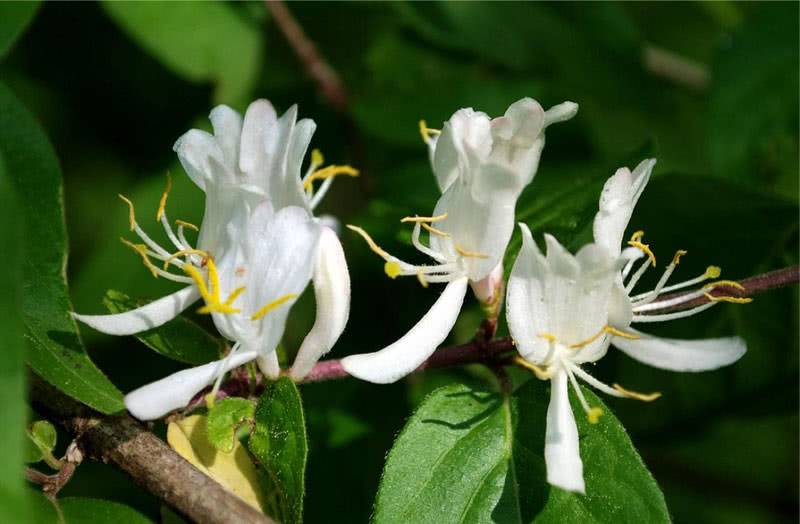

The plant begins active growth in 3-4 years. Flowers may not form when the root collar is very deep during planting and when damaged by pests.
Structure
The composition of honeysuckle fruits includes many trace elements and vitamins:
- vitamin C (ascorbic acid);
- beta carotene;
- vitamin B2 (riboflavin);
- vitamin A (retinol);
- vitamin B1 (thiamine);
- potassium;
- iodine;
- phosphorus;
- iron;
- calcium;
- copper;
- magnesium;
- manganese;
- sodium;
- aluminum.
Other parts of this shrub are rarely used - roots, bark, leaves. Decoctions and infusions are used for colitis, eye infections, to relieve edema, to treat burns and wounds. Decoction of the leaves helps to get rid of dandruff and cope with increased oiliness of the skin.
Useful and medicinal properties
- It is indicated for people suffering from hypertension, as it lowers blood pressure.
- Helps in the fight against atherosclerosis.
- Relieves fatigue and stimulates the brain.
- Infusion of roots and branches is curative for tuberculosis.
- Improves the functioning of the liver, gallbladder.
- It is used for both treatment and prevention of diseases of the gastrointestinal tract. Normalizes digestion.
- Used as an expectorant and antipyretic agent.
- It is useful for diseases of the cardiovascular system.
- Recommended for metabolic disorders. Reduces blood cholesterol levels.
- Can be used by pregnant and lactating women as a prophylaxis for colds and viral diseases. But consumption should not exceed 2-3 tablespoons.
- It has a diuretic effect.

